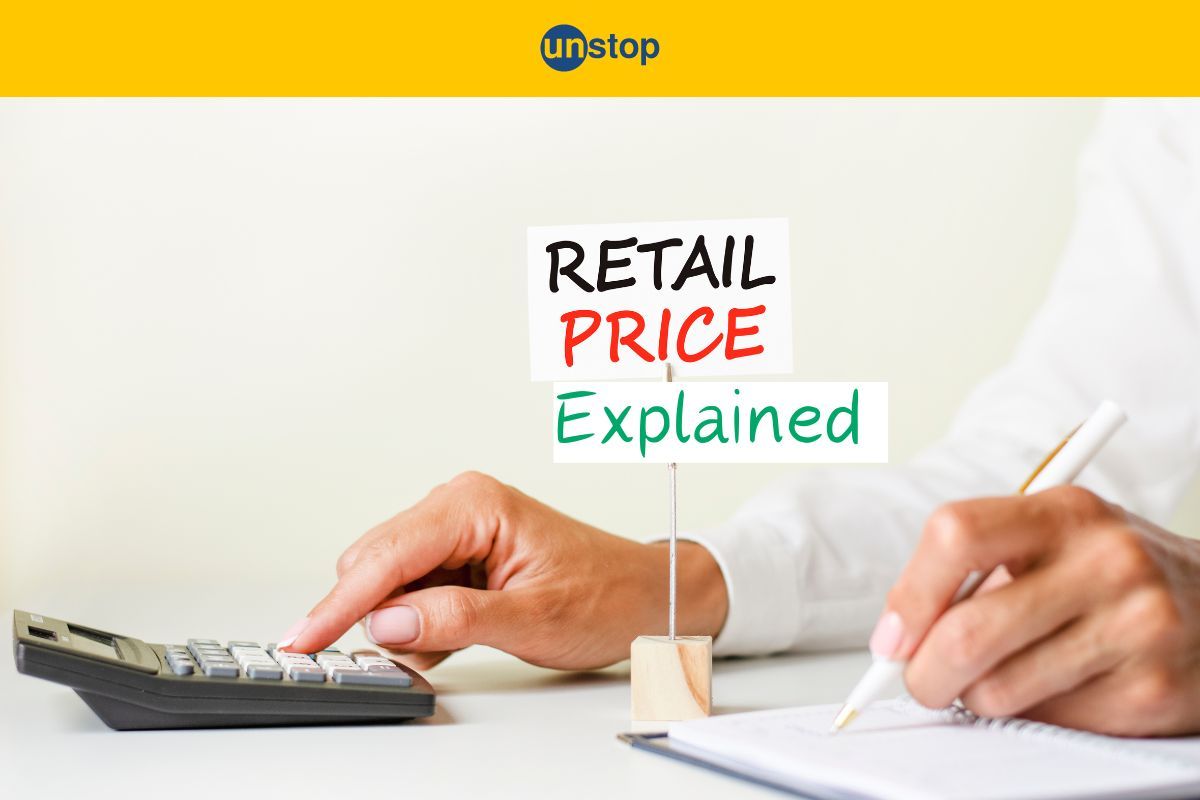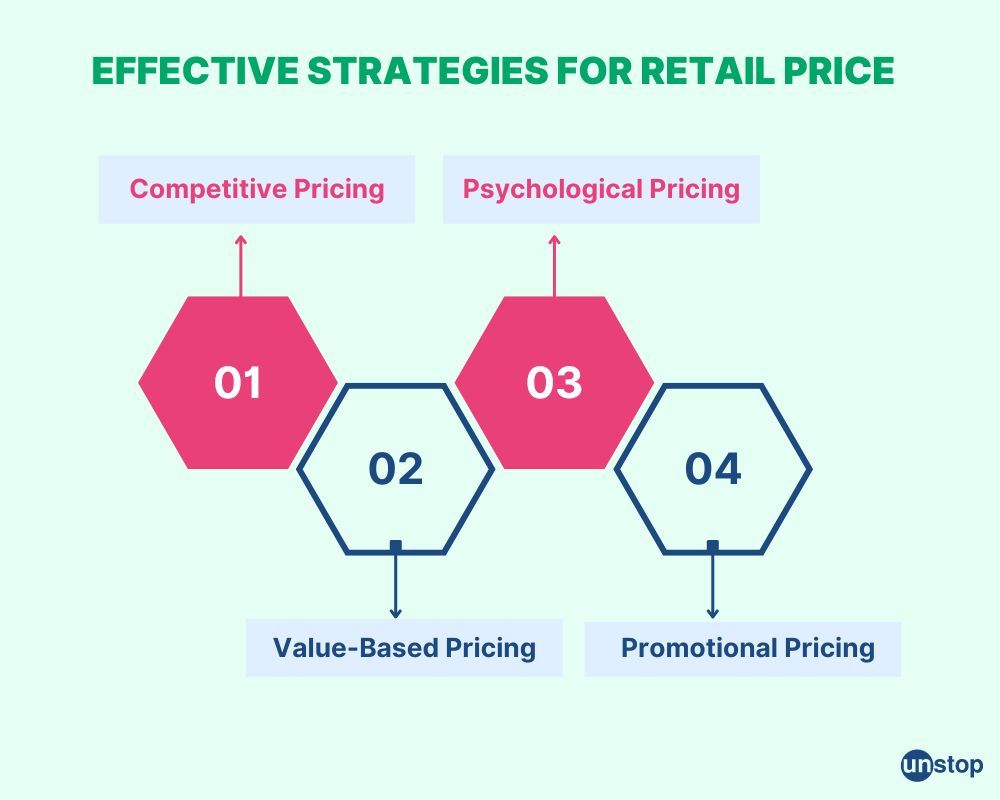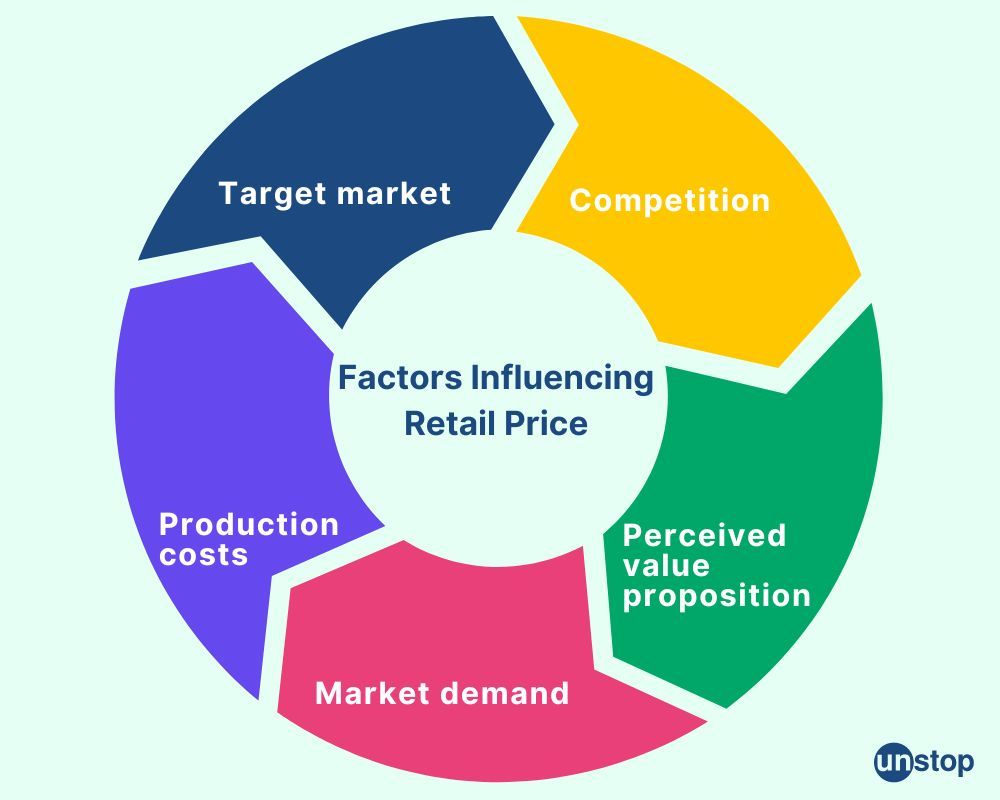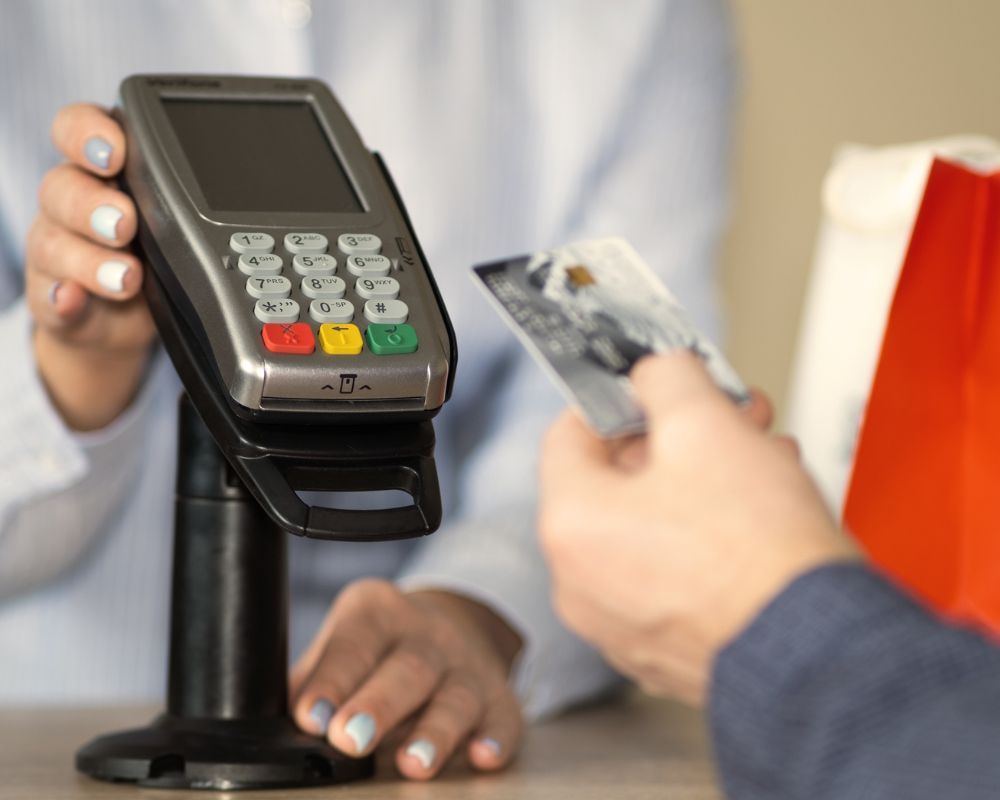- Definition Of Retail Price & Importance
- Strategies For Effective Retail Price
- Factors Influencing Retail Price
- Calculating Retail Price & Formula
- Wholesale Vs Retail Price Dynamics
- Manufacturer Suggested Retail Price (MSRP)
- Advanced Pricing Techniques in Retail
- Tools & Technologies In Retail Price
- Frequently Asked Questions (FAQs)
Retail Price: Meaning, Factors, Strategies & Formula Explained

Retail price plays an indispensable role in the success of any retail business. Understanding the concept of retail price is essential for developing effective pricing strategies.
The retail price directly impacts customer perception and purchasing decisions. In this article, we will delve into the nitty gritty of retail price.
Definition Of Retail Price & Importance
Retail price is the final price at which a product or service is sold to consumers in a retail store. It encompasses various costs such as production, distribution, marketing, and profit margin.
Importance Of Retail Price For Retailers
For retailers, setting an appropriate retail price ensures profitability while remaining competitive in the market. It helps cover expenses like rent, utilities, employee wages, and other operational costs.
It allows retailers to generate revenue that can be reinvested into their business for growth and expansion.
Importance Of Retail Price For Customers
Customers consider retail prices when making purchasing decisions. They evaluate whether a product offers value for money based on its perceived quality and features compared to its price tag.
Higher prices may lead customers to perceive a product as more premium or exclusive, while lower prices may attract budget-conscious shoppers.
Strategies For Effective Retail Price
To create an effective retail price, retailers should consider the following recommended strategies:

Competitive Pricing Strategy
A competitive pricing strategy focuses on offering lower prices than competitors. By analyzing the market and understanding the pricing strategies of competitors, retailers can set their prices strategically to attract customers.
This approach aims to gain a competitive edge by providing products at an affordable rate compared to others in the market.
For example, an online clothing retailer targeting budget-conscious customers may opt for a competitive pricing strategy to offer affordable options that undercut competitors' prices.
Value-Based Pricing Strategy
In contrast to a competitive pricing strategy, a value-based pricing strategy emphasizes the perceived value of a product or service. Instead of solely considering the cost of production, it also considers factors such as quality, brand reputation, and customer demand.
By setting prices based on perceived value, retailers can position their products as premium offerings and target consumers who are willing to pay more for superior quality or unique features.
For example, an upscale boutique specializing in luxury fashion might adopt a value-based pricing strategy by positioning its products as high-end and exclusive.
Psychological Pricing Strategy
A psychological pricing strategy utilizes techniques like charm pricing or bundle pricing to influence consumer behavior. Charm pricing involves setting prices just below whole numbers (e.g., INR 9.99 instead of INR 10) to create an illusion of a significantly lower price. Bundle pricing combines multiple products or services at a discounted rate, enticing customers with perceived added value.
Psychological pricing strategies aim to tap into consumers' subconscious decision-making processes and encourage them to make purchases based on emotions rather than rationality.
Promotional Pricing Strategy
Another strategy is promotional pricing, which involves offering discounts or special deals to attract customers. These temporary price reductions can generate excitement and increase sales volume. However, it's important for retailers to carefully analyze the impact of these promotions on their overall profitability.
Retailers often employ a combination of these strategies depending on their target market, industry trends, and specific product offerings. Retailers must conduct thorough market research and analyze consumer behavior patterns before implementing any retail pricing strategy.
Factors Influencing Retail Price
The retail price of a product or service is influenced by several factors. Let us study some of the factors that influence retail prices:

Market Demand
The role of market demand in determining pricing strategies is essential. If there is high demand for a particular item, businesses may increase their retail price to capitalize on consumer willingness to pay more.
Conversely, if demand is low, companies may lower prices to attract customers.
Competition
Competition also affects retail pricing decisions. In highly competitive markets where multiple businesses offer similar products or services, companies may engage in pricing wars to gain a competitive edge.
This can result in lower retail prices as businesses try to undercut each other.
Perceived Value
Perceived value also plays an important role in determining retail prices. Consumers are often willing to pay more for products or services they perceive as having higher quality or value. Businesses leverage this perception by strategically pricing their offerings based on how customers perceive them.
Gathering feedback from customers through surveys or social media platforms can provide important insights into how customers perceive pricing. Understanding how customers perceive the value of products or services is crucial for setting competitive prices.
Retailers should consider factors such as quality, features, brand reputation, and customer reviews.
Production Costs
The cost of manufacturing or acquiring products directly affects their retail prices. Higher production costs often result in higher retail prices unless offset by other considerations.
Target Market
Understanding the target market's purchasing power and willingness to pay helps retailers set appropriate prices that align with customer expectations.
Value Proposition
The perceived value that a product offers influences its pricing strategy. A retailer may choose to position their products as high-value items warranting higher prices or offer discounts to attract budget-conscious consumers.
Calculating Retail Price & Formula
Calculating the retail price of a product involves considering various factors and costs associated with bringing that product to market. By taking into account manufacturing costs, overhead expenses, and desired profit margins, businesses can determine an appropriate retail price that covers all expenses and allows for profitability.
Manufacturing Costs
One crucial aspect of calculating the retail price is considering the manufacturing costs incurred during the production process. This includes expenses related to raw materials, labor, machinery, and any other resources required to create the product.
By accurately assessing these costs, businesses can ensure that they are adequately covered in the final retail price.
Overhead Expenses
In addition to manufacturing costs, businesses must also factor in overhead expenses when determining the retail price. Overhead expenses encompass various indirect costs associated with running a business.
It includes rent for the physical store or warehouse space, utilities, insurance, marketing efforts, salaries of non-production staff members, and other administrative costs. These overhead expenses need to be allocated proportionally across each unit of the product sold.
Desired Profit Margin
Determining a suitable profit margin is another critical consideration when calculating the retail price. The profit margin represents the amount of money a business aims to make from selling each unit of its product. It is typically expressed as a percentage of the cost or selling price.
To arrive at an appropriate profit margin figure for setting a retail price, businesses must consider their industry standards and competitive landscape. They need to strike a balance between generating enough profit to sustain their operations and remaining competitive within their market.
Formula To Calculate Retail Price
Various pricing formulas can be used to calculate the final retail price based on factors like cost-plus pricing or keystone pricing.
Cost-Plus Pricing
This formula involves adding up all costs associated with producing and bringing a product to market (including manufacturing costs and overhead expenses) and then adding a predetermined percentage as profit margin.
Keystone Pricing
Keystone pricing is a simple formula where the selling price is set at twice (or close to it) the cost price. For example, if the cost of producing an item is INR 10, the keystone pricing would set the retail price at around INR 20.
These formulas provide businesses with a systematic approach to determining their retail prices, ensuring that all costs are covered while allowing for profitability.
Wholesale Vs Retail Price Dynamics
Understanding the dynamics between wholesale and retail prices is essential for both retailers and consumers.
Wholesale Price: Lower Due To Bulk Purchases
Retailers purchase goods in bulk from wholesalers at a lower price. Wholesalers offer discounted rates to retailers as they buy large quantities of products at once. This allows retailers to take advantage of economies of scale, reducing their costs per unit.
By purchasing in bulk, retailers can negotiate better deals with suppliers, enabling them to secure lower wholesale prices. This cost advantage gives them room to add a markup when selling products at retail prices.
Retailers' Markup: Covering Expenses & Generating Profit
When retailers receive goods from wholesalers, they add a markup to the wholesale price before selling them to customers. The markup covers various expenses incurred by retailers, such as rent, utilities, employee wages, marketing costs, and other operational overheads.
The retailer's markup also serves as a means for generating profit. Businesses need to make a profit to sustain themselves and continue providing products or services to consumers. The amount of markup added by retailers depends on market demand, competition, product exclusivity, brand reputation, and target customer segment.
Negotiating Better Deals With Suppliers
Understanding the dynamics between wholesale and retail prices empowers retailers when negotiating with suppliers. By knowing the typical wholesale prices for specific products within their industry or niche, retailers can assess whether they are receiving fair pricing from wholesalers.
Being aware of standard wholesale pricing helps identify opportunities for cost savings or potential areas where negotiations may be required. Negotiating better deals with suppliers can lead to several benefits for retailers.
These include increased profit margins, improved competitiveness in the market, enhanced product offerings, and potentially gaining a larger market share.
Manufacturer Suggested Retail Price (MSRP)
Manufacturers often set a recommended selling price known as the Manufacturer Suggested Retail Price (MSRP). This serves as a guideline for retailers when fixing the price at which they will sell the product to consumers.
Recommended Selling Price
The MSRP is the price suggested by manufacturers for their products. It represents what they believe is a fair value for the item based on factors such as production costs, market demand, and competition. Manufacturers take into account various expenses like raw materials, labor, research and development, marketing, and profit margins when setting the MSRP.
Starting Point For Retailers
Retailers typically use the MSRP as a starting point when deciding how much to charge customers. However, it's important to note that retailers are not obligated to sell products at the MSRP. They have the freedom to set their own prices based on factors specific to their business and market conditions.
Benefits Of Understanding MSRP
Understanding the concept of MSRP can be beneficial for both retailers and consumers. For retailers, it provides a benchmark to gauge their pricing strategies and helps them make informed decisions about setting competitive prices. It also allows them to effectively communicate value to customers by highlighting any discounts or savings compared to the MSRP.
For consumers, understanding the MSRP can help them evaluate whether they are getting a good deal when purchasing a product.
By comparing prices across different retailers and considering factors such as quality, features, and warranties, consumers can make more informed purchasing decisions.
Advanced Pricing Techniques in Retail
Dynamic pricing, price discrimination, and promotional pricing techniques are some of the advanced approaches that retail businesses employ to set their prices strategically. These techniques allow retailers to adapt their pricing strategies based on market conditions and consumer behavior, ultimately maximizing their competitive advantage.
Dynamic Pricing
Dynamic pricing is a technique that adjusts prices in real-time based on factors such as demand, competition, and inventory levels. By leveraging data analytics and algorithms, retail outlets can optimize their pricing approach to maximize profits.
For example, if a popular item is running low on stock, dynamic pricing may increase the price to take advantage of its scarcity. On the other hand, if demand for a particular product is low, dynamic pricing may lower the price to stimulate purchases.
Price Discrimination
Price discrimination basically means charging different prices to different customer segments based on income level, location, or purchasing history. This technique allows retailers to capture additional revenue by tailoring prices to each segment's willingness to pay.
For instance, airlines often offer tiered ticket prices where customers who book earlier or have flexible travel dates can enjoy lower fares compared to those who book at the last minute.
By utilizing these advanced pricing techniques effectively, marketing managers can gain a competitive edge in the retail industry. However, it's essential for businesses to carefully consider the impact of these strategies on their brand image and long-term profitability.
Tools & Technologies In Retail Price
Tools and technologies play an important role in retail pricing by enabling efficient and accurate price analysis. They also automate pricing processes, reducing manual errors and saving time for retailers.
Pricing Software
Pricing software is a valuable tool for retailers to analyze market data and competitor prices and optimize their pricing strategies. With the help of this software, retailers can gather insights into consumer behavior and make informed decisions about pricing their products.
By analyzing data on similar products and competitor prices, retailers can determine the optimal price point that maximizes sales while maintaining profitability.
Point-of-Sale Systems
Point-of-sale (POS) systems provide real-time information on sales, inventory, and pricing. Equipped with advanced features, these systems enable retailers to track customer purchases, manage inventory levels, and adjust prices accordingly.

By having access to up-to-date data on product availability and sales performance, retailers can make timely pricing decisions to meet customer demand effectively.
Data Analytics Tools
The role of data analytics tools is important as these help retailers identify pricing trends and customer preferences. Retailers can also use data analytics tools to conduct price elasticity analysis. This analysis helps determine how sensitive customers are to changes in price.
By understanding price elasticity for different products or categories, retailers can adjust prices accordingly to maximize revenue without negatively impacting demand.
Dynamic Pricing Algorithms
Dynamic pricing algorithms are another powerful tool used in retail pricing. These algorithms automatically adjust prices based on factors such as demand fluctuations, competitor prices, and even time of day or week.
For example, during peak shopping hours or seasons when demand is high, the algorithm may increase prices slightly to capitalize on the increased willingness of customers to pay more.
This real-time adjustment of prices allows retailers to optimize their revenue by finding the right balance between maximizing profits and attracting customers.
Conclusion
In conclusion, mastering retail price requires a comprehensive knowledge of the factors that influence pricing decisions, the implementation of effective pricing strategies to enhance profitability and competitiveness, and continuous monitoring of market dynamics and consumer behavior.
By adopting a data-driven approach and staying attuned to customer preferences, retailers can optimize their pricing strategies for success in the dynamic retail industry.
Frequently Asked Questions (FAQs)
1. What is the purpose of retail price?
The purpose of retail price is to fix the selling price of a product or service to consumers. It takes into account various factors such as production costs, profit margins, market demand, and competition in order to set a price that maximizes sales and profitability.
2. How is retail price calculated?
Retail price is typically calculated by adding a markup percentage to the cost of acquiring or producing the product. The markup percentage accounts for expenses such as overhead costs, marketing expenses, and desired profit margin. The formula for calculating retail price is:
Retail Price = Cost Price + (Markup Percentage * Cost Price).
3. What is Manufacturer Suggested Retail Price (MSRP)?
Manufacturer Suggested Retail Price (MSRP) is the recommended selling price set by the manufacturer or producer of a product. It serves as a reference point for retailers and helps maintain consistency in pricing across different sales channels. Retailers may choose to sell at MSRP or set their prices based on market conditions.
4. What are some strategies for effective retail pricing?
Some strategies for effective retail pricing include value-based pricing, where prices are set based on perceived customer value; dynamic pricing, which adjusts prices in real-time based on demand and other factors; promotional pricing, offering discounts or deals to attract customers; and competitive pricing, setting prices based on what competitors charge.
5. How do emerging trends and consumer behavior impact retail prices?
Emerging trends such as changes in technology, shifts in consumer preferences, economic conditions, and cultural influences can all impact retail prices. Consumer behavior plays a significant role as well since purchasing decisions are influenced by factors like brand perception, quality expectations, affordability, convenience, and personalization options.
Suggested reads:
- Marketing Planning: Types, Process, And Components Explained
- Marketing Control: Definition, Types & Techniques Explained
- Purchase Order: Definition, Types, Process & Examples
- Pricing Strategies: Definition, Types & Examples Explained
- Customer Lifetime Value: Definition & Formula Explained
Alekhya Chakrabarty is a father, a doodler, a trivia buff, a sports fanatic and a lifelong student of marketing. Alekhya is the VP of Marketing & Growth at Unstop, the engagement and hiring platform which connects students and graduates with opportunities. He has over a decade and a half of experience in driving revenue and building brands with the likes of Nestle, HUL and ITC. He is an alumnus of IMT Ghaziabad and in his last stint he was leading the marketing function at Sunstone, a higher education startup. Alekhya has been recognised as a ‘Top Voice’ on LinkedIn for Digital Marketing & Brand Management. He runs a marketing podcast titled East India Marketing Company to drive conversations around growth, content, culture and commerce.
Login to continue reading
And access exclusive content, personalized recommendations, and career-boosting opportunities.
Subscribe
to our newsletter
















Comments
Add comment